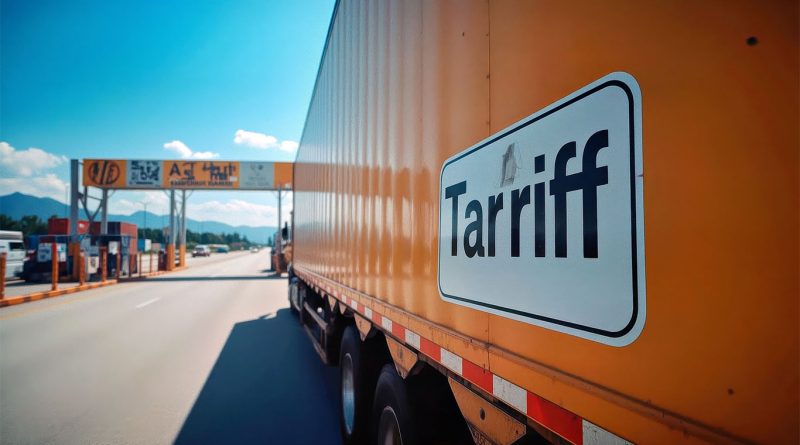New truck tariffs test US supply chains and fleet budgets
Subscribe to our free newsletter today to keep up to date with the latest supply chain industry news.
President Donald Trump said Monday that all medium- and heavy-duty trucks imported into the United States will face a 25 percent tariff starting Nov. 1. The move expands earlier trade measures aimed at vehicles and equipment and delays a previously announced October start date.
Trump first mentioned the policy in late September on Truth Social, saying that “Heavy Trucks” built outside the country would be taxed at 25 percent. Those tariffs were not implemented at the time, but the updated announcement signals a broader scope that includes a wide range of imported trucks and buses.
The order applies to delivery trucks, garbage trucks, utility vehicles, buses, and tractor-trailers. The White House described the tariff as a safeguard for domestic producers, identifying companies such as Peterbilt, Kenworth, and Freightliner as potential beneficiaries. The administration justified the move under Section 232 of the Trade Expansion Act, which allows tariffs when imports are considered a threat to US industrial capacity.
Industry groups and economists say the policy could lead to higher costs throughout the freight sector. Tariffs on vehicles and parts typically increase retail prices as manufacturers and distributors pass along the expense.
How USMCA rules of origin could shape tariff exposure
Under the United States-Mexico-Canada Agreement (USMCA), heavy-duty trucks qualify for tariff-free trade if at least 64 percent of their value originates in North America. That threshold will rise to 70 percent in 2027.
The rule means a truck assembled in Mexico or Canada could avoid the 25 percent tariff if most of its materials, parts, and labor are sourced within the region. Engines, axles, transmissions, and metal content count toward the total.
The Chamber of Commerce opposed the new duties, noting that most truck imports come from US allies, Mexico, Canada, Japan, Germany, and Finland. Still, vehicles that fall below USMCA content requirements would face the full tariff, creating uncertainty for manufacturers with global supply chains.
Price pass-through and fleet buyer challenges
Economists estimate that 25 percent import tariffs on autos could raise inflation by up to 0.4 percentage points, costing households about $500 to $600 annually. While heavy-duty vehicles represent a smaller market, the same pattern may apply.
Fleet operators are expected to face higher purchase prices and tighter equipment availability. The used truck market could strengthen as buyers delay new orders. Leasing and financing costs may rise in tandem, as companies adjust for higher replacement values.
Many large carriers plan their fleet investments years in advance. With tariffs starting in November, some may accelerate purchases to secure current pricing or shift orders toward domestic production. For smaller operators, higher truck costs could slow equipment turnover, adding maintenance expenses and reducing access to newer, more efficient models.
Cross-border manufacturing and Mexico’s role
Mexico is the largest exporter of medium- and heavy-duty trucks to the United States, supplying roughly three-quarters of imports. Shipments of large vehicles from Mexico have tripled since 2019 to about 340,000 units, according to government figures.
The country hosts 14 manufacturers and assemblers of trucks and buses, plus two engine plants. Mexico’s trade ministry said its exports to the United States include about 50 percent US content on average.
Under USMCA, those vehicles remain exempt if they meet origin thresholds. However, verifying compliance can be complex for suppliers using components from Europe or Asia. Automakers including Stellantis, Daimler Truck, and Paccar have urged the administration to reconsider, arguing that higher costs could disrupt North American production networks.
In 2024, the United States imported about $128 billion in heavy vehicle parts from Mexico, representing 28 percent of total US imports in that category. Any broad tariff enforcement could strain integrated supply chains built over decades.
Sources:
